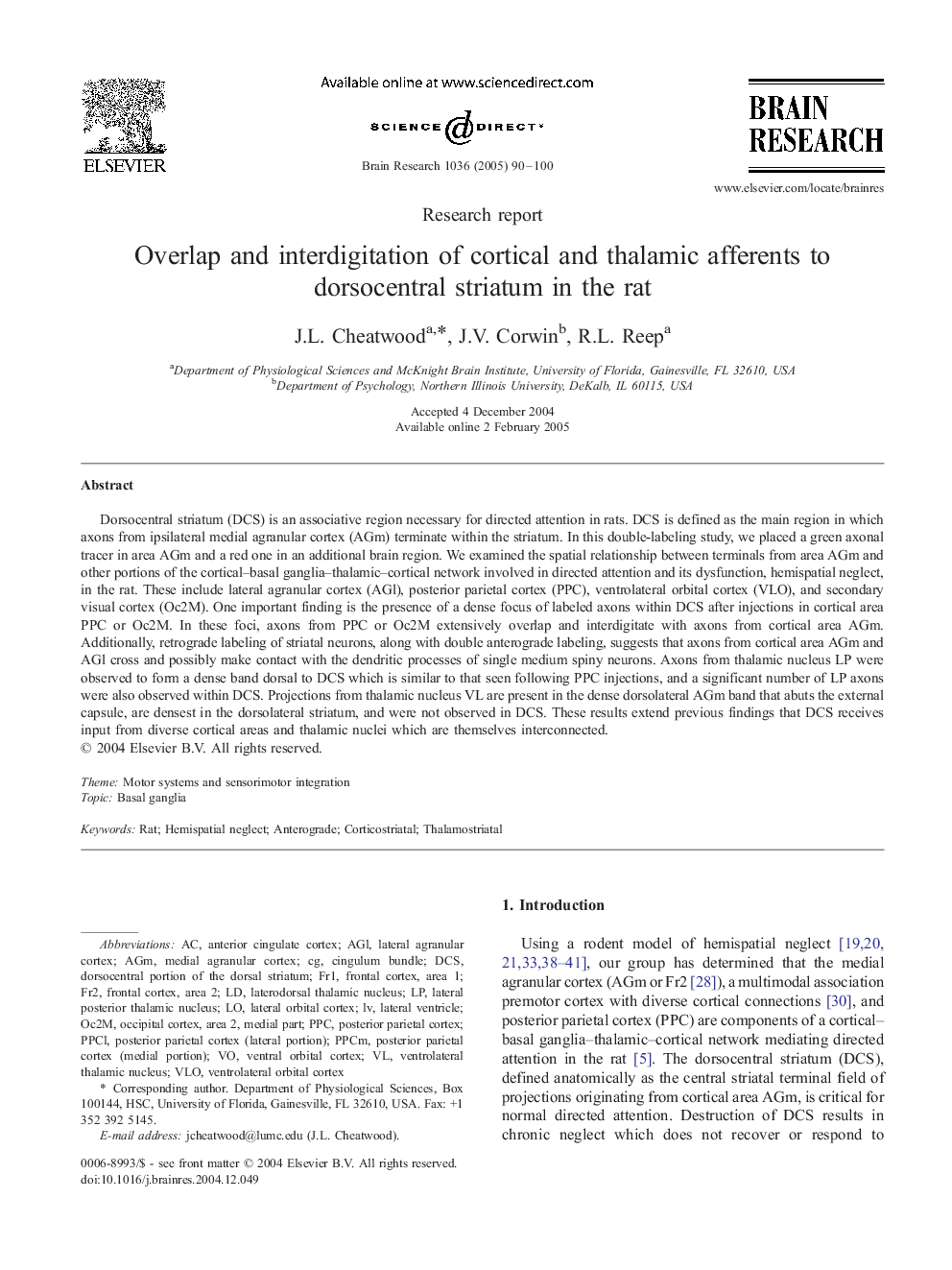| Article ID | Journal | Published Year | Pages | File Type |
|---|---|---|---|---|
| 9416779 | Brain Research | 2005 | 11 Pages |
Abstract
Dorsocentral striatum (DCS) is an associative region necessary for directed attention in rats. DCS is defined as the main region in which axons from ipsilateral medial agranular cortex (AGm) terminate within the striatum. In this double-labeling study, we placed a green axonal tracer in area AGm and a red one in an additional brain region. We examined the spatial relationship between terminals from area AGm and other portions of the cortical-basal ganglia-thalamic-cortical network involved in directed attention and its dysfunction, hemispatial neglect, in the rat. These include lateral agranular cortex (AGl), posterior parietal cortex (PPC), ventrolateral orbital cortex (VLO), and secondary visual cortex (Oc2M). One important finding is the presence of a dense focus of labeled axons within DCS after injections in cortical area PPC or Oc2M. In these foci, axons from PPC or Oc2M extensively overlap and interdigitate with axons from cortical area AGm. Additionally, retrograde labeling of striatal neurons, along with double anterograde labeling, suggests that axons from cortical area AGm and AGl cross and possibly make contact with the dendritic processes of single medium spiny neurons. Axons from thalamic nucleus LP were observed to form a dense band dorsal to DCS which is similar to that seen following PPC injections, and a significant number of LP axons were also observed within DCS. Projections from thalamic nucleus VL are present in the dense dorsolateral AGm band that abuts the external capsule, are densest in the dorsolateral striatum, and were not observed in DCS. These results extend previous findings that DCS receives input from diverse cortical areas and thalamic nuclei which are themselves interconnected.
Keywords
PPCAGLAGMOc2MVLOFR2DCslateral agranular cortexCorticostriatalFR1AnterogradePPCMCingulum bundlelateral ventriclethalamostriatalMotor systems and sensorimotor integrationbasal gangliaHemispatial neglectlateral orbital cortexVentral orbital cortexfrontal cortex, area 2anterior cingulate cortexVentrolateral orbital cortexMedial agranular cortexposterior parietal cortexRatlaterodorsal thalamic nucleusventrolateral thalamic nucleuslateral posterior thalamic nucleus
Related Topics
Life Sciences
Neuroscience
Neuroscience (General)
Authors
J.L. Cheatwood, J.V. Corwin, R.L. Reep,
